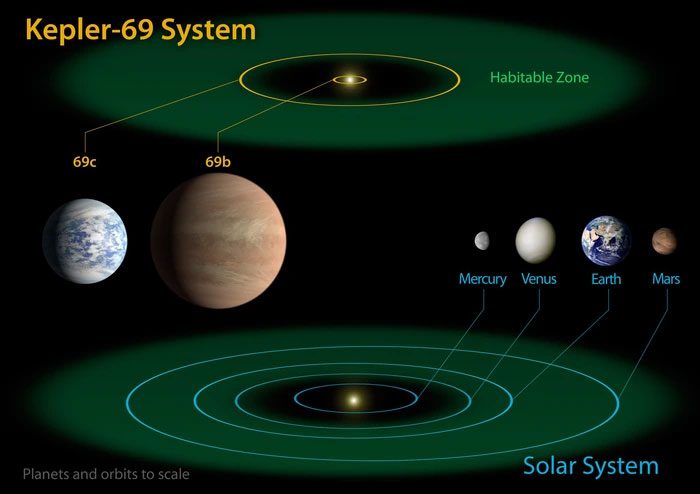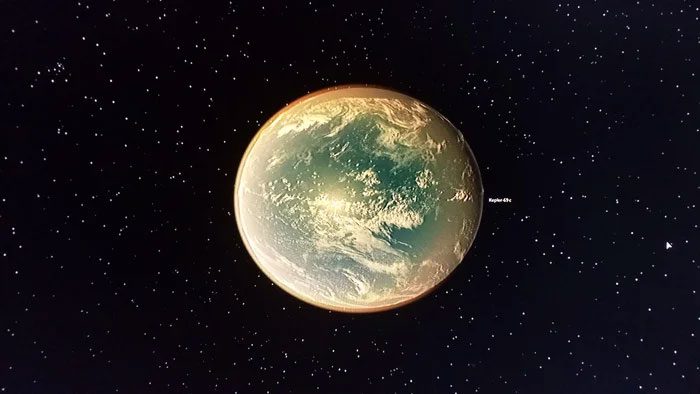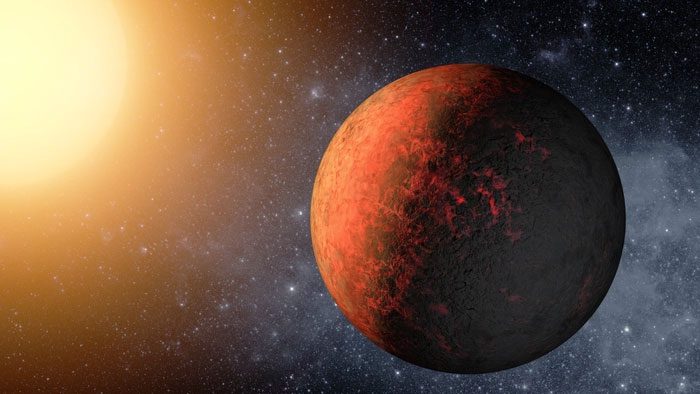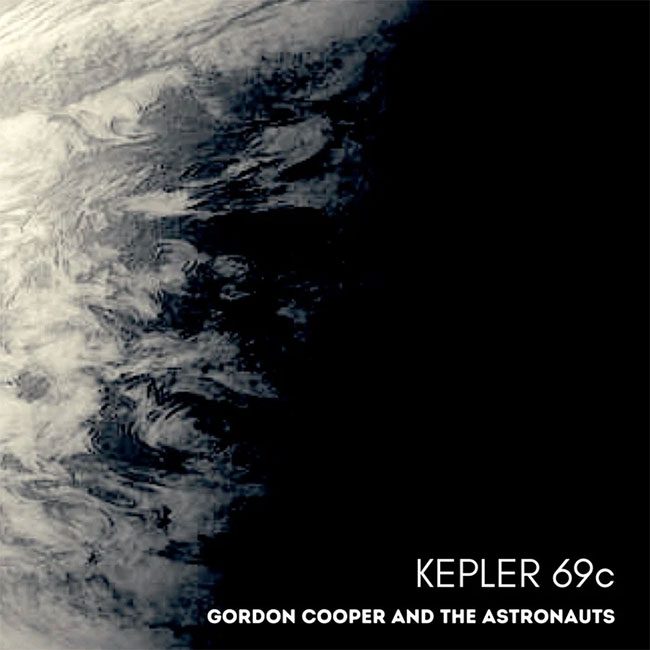Thousands of light-years away from Earth, another planet capable of supporting life may exist. Kepler 69c, a super-Earth located outside our Solar System, is widely considered a potential candidate for such a place.
Located 2,383 light-years away in the constellation Cygnus, Kepler 69c is identified as a promising super-Earth by astronomers.
Kepler 69c is about 1.7 times larger than our planet and orbits a star similar to the Sun, known as Kepler-69. However, at this moment, we do not truly know if this planet resides within the habitable zone.

Super-Earths may be the most common type of planet in our galaxy. Since 2009, the Kepler Space Telescope has discovered around 4,000 exoplanets, with 30% of those being super-Earths. A few percent of these super-Earths orbit within the habitable zone of their host stars.
If it is too close to its host star, Kepler 69c would be too hot for liquid water to exist on its surface. Conversely, if it is too far from its star, it would be nothing more than a frozen world. What we do know is that Kepler 69c orbits its star at a distance approximately 40% closer than the distance Earth orbits the Sun. This could mean that Kepler 69c might not be a true super-Earth; instead, it could be a super-Venus.
This planet is too far from us, so everything we know so far is merely speculation. But if you plan to visit this planet, you should abandon that thought immediately because even if you could travel at 1% the speed of light, you would not arrive there anytime soon. At this speed, you could circle the Earth in just over 13 seconds. However, to reach Kepler 69c, it would take about 238,000 years.

The habitable zone is the region where a planet’s surface temperature is suitable for liquid water, not too cold or too hot. However, it is possible that some super-Earths are not composed of rocky materials like Earth. They may be primarily made of hydrogen and helium, like Jupiter and Saturn, making them unsuitable for life.
Based on its distance from its star, we know that Kepler 69c receives sunlight similar to that of Venus. Despite being larger than Earth, it has a relatively low density. All of this suggests that instead of metals, this rocky planet is primarily composed of silicate and carbonate minerals.
With all these minerals in its crust, Kepler 69c could have a genuinely thick atmosphere. This atmosphere would mostly consist of carbon dioxide. If Kepler 69c is similar to Venus, it would be a rather hot planet—its atmosphere would be trapped in an endless cycle of becoming thicker and hotter.
The surface temperature of this planet could reach up to 475 degrees Celsius. The atmospheric pressure would be over 90 times that of Earth—equivalent to being 900 meters deep in the ocean.

Kepler 69c is about 1.7 times larger than Earth. This planet orbits a star similar to our Sun. Astronomers are uncertain about Kepler 69c’s composition but indicate that its orbit takes about 242 days around a Sun-like star, with conditions reminiscent of our neighboring planet, Venus.
Under such conditions, you would likely not find anything resembling oceans here. Much like on Venus, the high temperatures would cause all water to boil away. Any life that might exist on this planet would need to withstand the harsh conditions described above. Alternatively, it might have to exist somewhere other than on the surface.
However, if life truly exists on Kepler 69c, it might be found in the clouds. At an altitude of about 50 km, temperatures would be much cooler, ranging from around 30 to 70 degrees Celsius. At this altitude, gravity could be just over 70% of that found on Earth.
This weaker gravity might allow life forms to thrive in the skies. Thus, life may float freely in the atmosphere. This would be another way in which this planet might have more in common with Venus than with Earth. Space probes around Venus have detected traces of a gas that could indicate potential signs of life—phosphine.

NASA reports that to date, scientists are still uncertain whether life exists on Kepler 69c. However, their discoveries may help humanity take a step closer to finding a world with life similar to Earth.
If phosphine is found in the atmosphere of Kepler 69c, it could result from bacteria that do not require oxygen to survive. This gas has a smell reminiscent of rotting fish. On Earth, bacteria that produce phosphine typically inhabit marshes or wetlands. But on Venus or Kepler 69c, these bacteria may survive within the thick, low-oxygen atmosphere.


















































